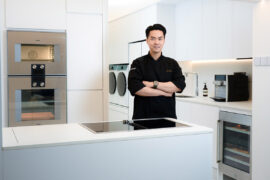So you think you can ABW? Think again. Here’s a bit of a lowdown.
Roughly twenty years ago, the world of workplace interiors was taken by storm as office designers started to question traditional working styles. The inflexible and homogenous cubicle, with its defined and isolating boundaries around each worker bee’s personal space, dissembled like the Berlin Wall (and around about the same time too!) to embrace newer, more democratic styles.
The “less is more” philosophy that became voguish throughout the early 1990s to mid 2000s focused on the potential benefits of open planning. Since this more flexible (and definitely more transparent) design approach encouraged collaboration, team spirit, wellbeing and an increase in worker happiness, commercial projects over the world could hardly wipe the smile of self-satisfaction off their faces.
However, far from being ‘The End of History’ in office design, this new approach quickly revealed to have its own set of pitfalls. Greater interaction led to greater distraction and a corresponding drop in productivity. Meanwhile colleagues who used the space reported increased anxiety, occupational rootlessness and an almost uncomfortable level of exposure. It seemed that somewhere in the mid-2000s that the cubicle was going to make a comeback.
Enter: Activity-Based Working (ABW). As an approach that cherry-picks the benefits of both closed and open workspaces, ABW recognises that the best environments are those which are adaptable to changing needs and mindsets. Often confused with hot desking (the concept that one desk does not belong to any one person) in truth it offers much more.
In an ABW office, not just one desk, but all spaces within the office, are shared and rotated according to the different activities each employee engages throughout their day. If the components of an ABW office have been properly designed and then specified – for example, by a company like Krost, who applies the same standards to their own internal offices – they can be moved and rearranged in an endless variety of configurations. Consequently, the benefits of open planning and hot desking – easy communication, lower real estate expenditure and lowered environmental impact – can still be enjoyed without relinquishing workers’ desires for privacy and quiet.
Krost stand among the forefront of companies in interior office design, partly due to their whole-hearted adoption of ABW and the flexible solutions it offers the modern workplace. Along with a variety of workstations to suit any desired arrangement – traditional, open plan, meeting and informal – Krost’s investment in R&D ensures that they continue to unveil new products tailored for the ABW-meets-agile working environment.
One such addition to its ABW solution in 2017 is the scape screen: temporary, easy-to-move walls which can be used to split a room and the acoustic features of which minimise noise distraction between groups. Krost have also brought out their Mix seating range, which joins other products such as the Gogo ottomans (pictured) to allow for casual meetings and discussions, accenting breakout and touchdown zones within multi-activity commercial spaces. Recognising the health impact that sedentary activity has on office workers, the Tonic and Lift S stations are designed to swap easily between a sitting and standing position.
It came at no surprise – or at least to those of us following workplace design trends – that the 2015 Telsyte Australian Digital Workplace Study predicted by 2020 that nearly two-thirds of Australian businesses will have adopted some aspect of the ABW philosophy into their workplace.
It is becoming accepted thinking that the more workers become more mindful of how they are using a certain space, the more mindful they will be of using their time. Change management is never an easy prospect, and the most successful office interior companies will be those, like Krost, who think carefully about the needs of space, employees, the penetration of new technology and how all of these elements corroborate to clarify the best answer any individual needs to succeed in the a modern workplace.
Visit Krost online and view your ABW answers below.












INDESIGN is on instagram
Follow @indesignlive
A searchable and comprehensive guide for specifying leading products and their suppliers
Keep up to date with the latest and greatest from our industry BFF's!

For those who appreciate form as much as function, Gaggenau’s latest induction innovation delivers sculpted precision and effortless flexibility, disappearing seamlessly into the surface when not in use.

Now cooking and entertaining from his minimalist home kitchen designed around Gaggenau’s refined performance, Chef Wu brings professional craft into a calm and well-composed setting.

Sydney’s newest design concept store, HOW WE LIVE, explores the overlap between home and workplace – with a Surry Hills pop-up from Friday 28th November.

In an industry where design intent is often diluted by value management and procurement pressures, Klaro Industrial Design positions manufacturing as a creative ally – allowing commercial interior designers to deliver unique pieces aligned to the project’s original vision.

At Dissh Armadale, Brahman Perera channels a retail renaissance, with a richly layered interior that balances feminine softness and urban edge.

CBRE’s new Sydney workplace elevates the working life and celebrates design that is all style and sophistication.
The internet never sleeps! Here's the stuff you might have missed

From radical material reuse to office-to-school transformations, these five projects show how circular thinking is reshaping architecture, interiors and community spaces.

Located in the former Madam Brussels rooftop, Disuko reimagines 1980s Tokyo nightlife through layered interiors, bespoke detailing and a flexible dining and bar experience designed by MAMAS Dining Group.